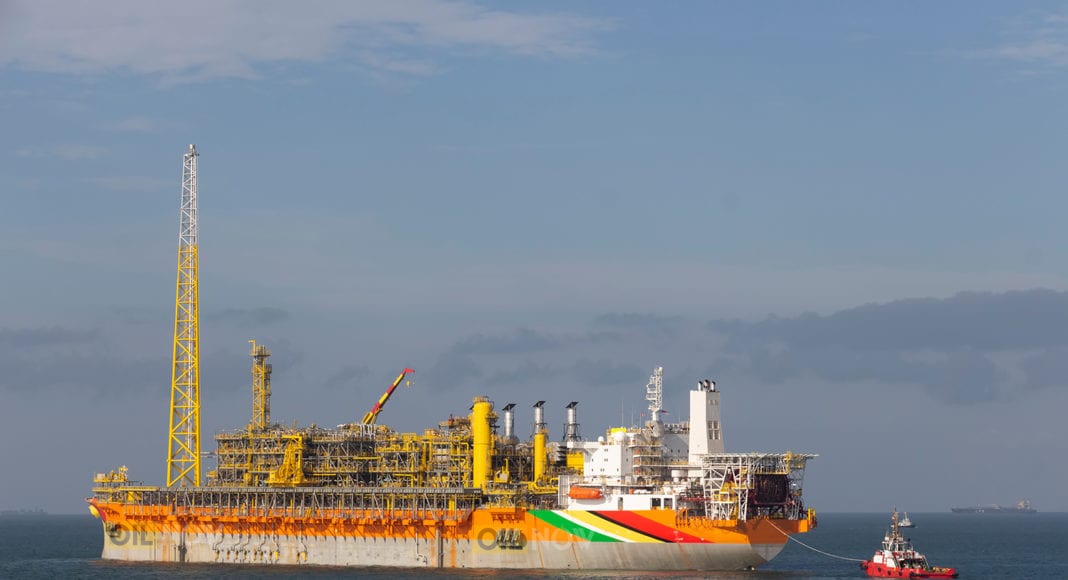The Government of Guyana has initiated steps to ascertain how much gas is available for export from the ExxonMobil-operated Stabroek Block where over 30 discoveries have been made amounting to nearly 11 billion barrels of oil equivalent, inclusive of associated gas.
According to provisions in the Petroleum Production Licence (PPL) for the Yellowtail Project, ExxonMobil’s affiliate, Esso Exploration and Production Guyana Limited (EEPGL) is required to conduct a Gas Utilization Study which would examine the associated and non-associated gas available from all approved petroleum production licences (i.e: Liza 1, Liza 2, Payara and Yellowtail) and discovered resources in the Stabroek Block.
This study is to consider over the short, medium and long term, a forecast of potential gas production for export from the FPSOs and the expected use that gas will be put to.
Guyana considers second gas pipeline to monetise growing reserves
The PPL notes that study shall also consider scenarios for the demand that might be expected for gas sales locally, in South America, regionally (the countries bordering Guyana) and internationally; as well as consider the cost and feasibility of gas export as Liquefied Natural Gas (LNG) and Liquefied Petroleum Gas (LPG).
Furthermore, the licence states that EEPGL must examine the feasibility of utilizing the existing and planned wells, flowlines, risers and production facilities for the export of gas both during and after the currently planned oil production phase. Additionally, the company must also determine the feasibility and cost of adding gas export equipment, wells, well workovers, flowlines, meters, risers and pipelines for export gas not included in the original Field Development Plan (FDP) submission costs. EEPGL is also expected to provide potential gas export rates and profiles which are determined at minimum and maximum feasible rates verified by reservoir modelling.
Additionally, EEPGL is required to propose for approval within 60 days of the date of the PPL being awarded (April 1, 2022), the terms of reference, methodology and workplan (including the schedule of activities), for the foregoing matters.
Public consultations on Guyana’s landmark gas-to-energy project to begin May 9
Within 270 days of the approval of the terms of reference, methodology and workplan (including the schedule of activities) or such later timeline as directed by the subject minister so as to ensure the licensee’s full compliance with this condition and support a diligent and transparent exercise, EEPGL is required to complete the study’s final report.
Importantly, the licence notes that EEPGL must meet with the minister and/or his representatives at least once in each 30-day period, or more frequently as requested, to provide an update on the progress of the study, discuss the issues raised by the study and come to agreement on resolution of issues and/or concerns regarding the study.
OilNOW understands that the progression of the study is contingent upon the licensee and the minister and/or his representatives being in agreement on the completeness of the outputs and resolution of issues and/or concerns regarding the study at each stage of the update.
It should be noted that the Gas Utilization Study is in addition to the requirement under Article 1 (b) of the Stabroek Block Petroleum Agreement which outlines that for each Field Development Plan that does not utilise all available associated gas for operations or to enhance oil production, it must include an Excess Gas Feasibility study within five years of a development plan submission.
The licensee is therefore required, if the Gas Utilisation Study determines that gas is available at Liza Phase 1 Liza Phase 2, Payara, Yellowtail or any other developments, to submit the individual gas feasibility studies as per the Stabroek Block Production Sharing Agreement (PSA).



